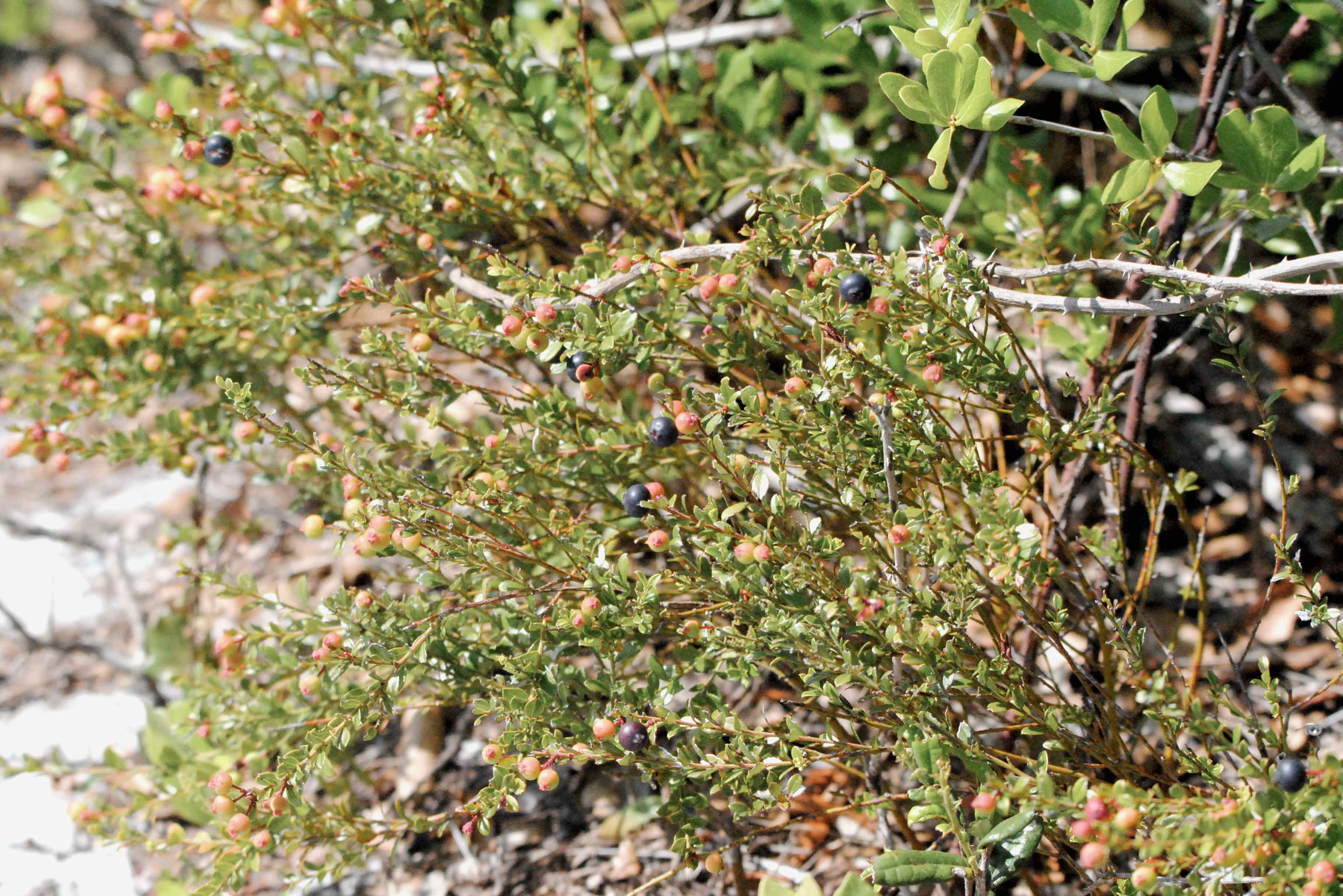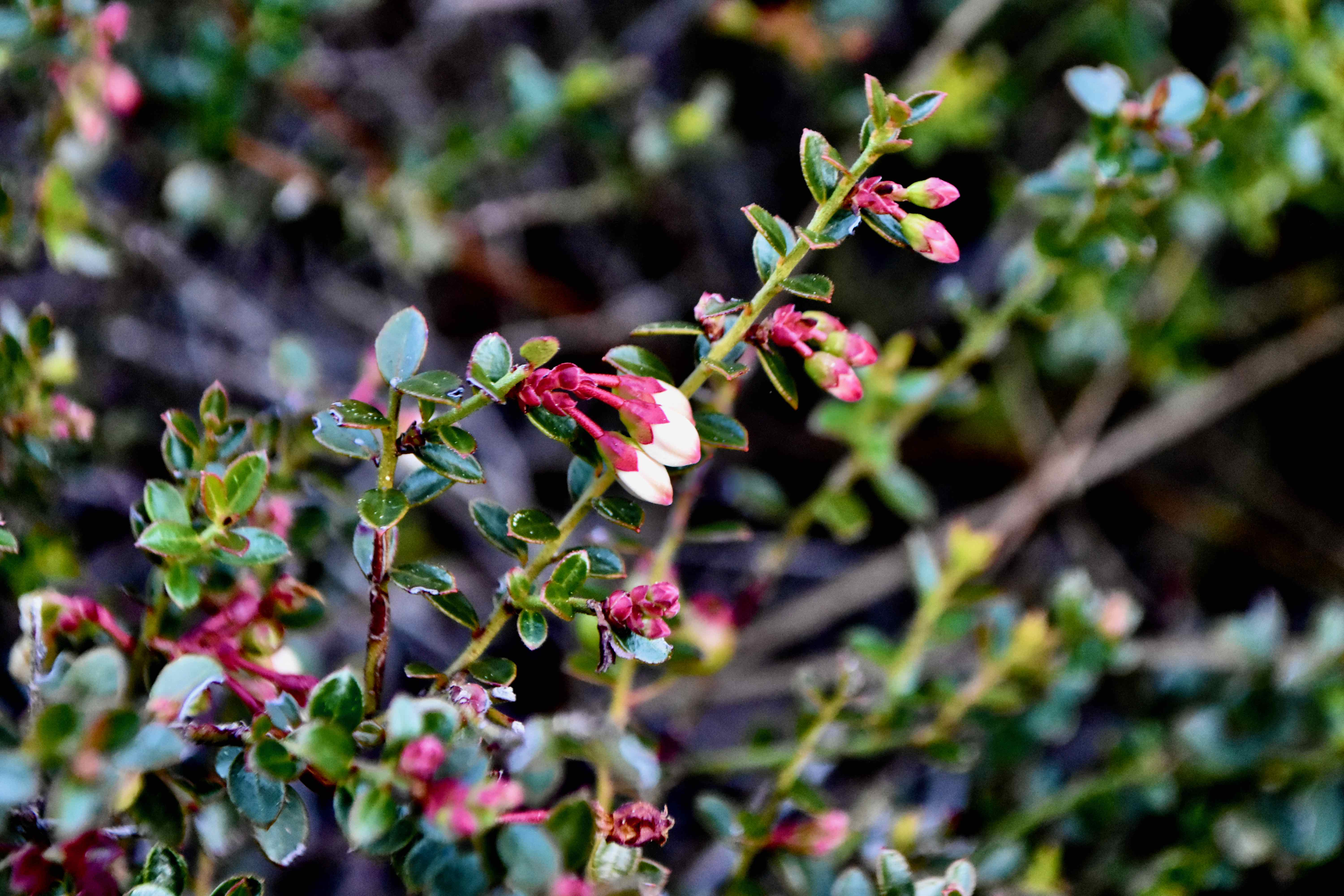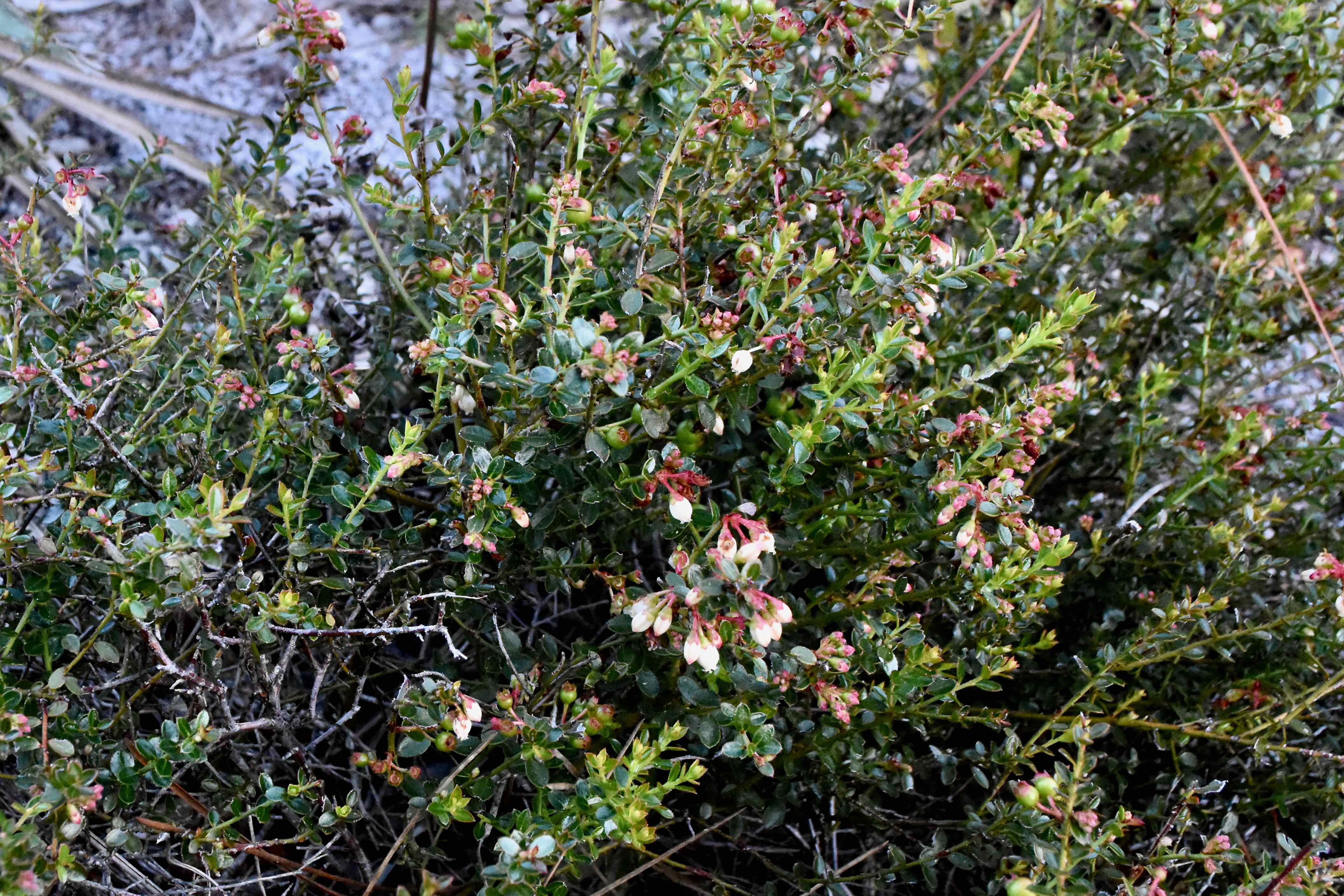
Shiny blueberry, photographed at Yamato Scrub Natural Area, Boca Raton, Palm Beach County, in April 2016.
Yum! That's the first word that comes to mind when we think of blueberries. Shiny blueberry, Vaccinium myrsinites, isn't an exception. It's high in sugars and vitamin C, low in fat, and prized by wildlife, especially black bears. The Seminoles ate them as well, as it did earlier Floridians and surely the European settlers who followed.
Shiny blueberries are found in scrubs and flatwoods throughout Florida, Alabama, Georgia and South Carolina. It's range might include a slice of Louisiana as well. It is a Florida native plant.
It is a low-lying shrub, topping out at two feet. It can, however, form large patches, spreading via rhizomes, or underground stems. The rhizomes are important in another beyond spreading the plant; they help shiny blueberry recover after a fire, which is common in the places the plant inhabits.
Fire, in fact, is an important to blueberries. Studies have found growth to be more vigorous on recently burned tracts than on land that hasn't been toasted for a while.
The flowers are small, bell-shaped, white, with a pink or red tinge to them. Shiny blueberry blooms in late winter and into the spring, producing small, black or dark blue berries. Seeds are tiny, about a millimeter in diameter.
The flowers are a source of nectar for butterflies; the branches and leaves are cover for birds and other animals, and browse for deer. But the real story here, of course, is the fruit. It attracts fox, mice, raccoons and skunks, and as mentioned above, bears. The United States Department of Agriculture says human-bear conflict is more likely to occur in years when blueberry production is low.
The Seminoles used shiny blueberry to make medicines to treat a variety of conditions, including sun sickness, eye disease, headache, high fever and diarrhea, and for chronically ill babies. It was also used cermonially. The berries are edible, of course, raw or used in pies, jellies and the like.
Shiny blueberry plants are cultivated and used in restorations, natural landscapes and as an accent plant. It likes drier, well-drained, acidic soil and lots of sunshine. It is a perennial, but according to the Florida Native Plant Society, it is a short-lived perennial, which might limit its usefuness in the landscape to a degree.
Shiny blueberry is also called ground blueberry, low blueberry, dwarf blueberry, Florida evergreen blueberry, southern evergreen blueberry, evergreen blueberry, lowbush blueberry. It is a member of Ericaceae, the heath family, which includes staggerbush and fetterbush, along with azaleas and rhododenrons.
Click on photo for larger image
Links for Shiny Blueberry


